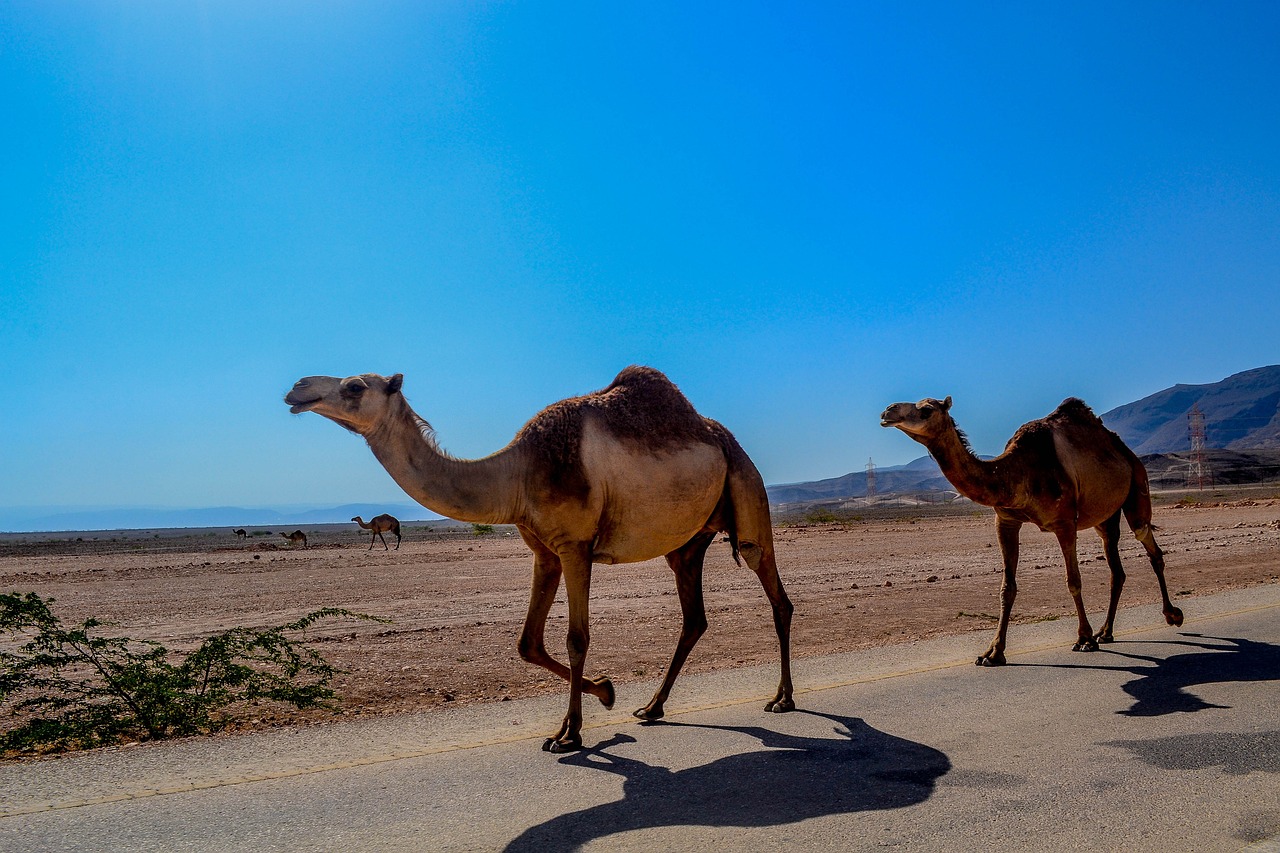Dholavira is an ancient Indus Valley Civilization site located in the Kutch district of Gujarat, India. It is one of the largest and most well-preserved sites of the Indus Valley Civilization and has been identified as one of the five largest Harappan sites in India.
It was discovered in the 1960s and excavations have been ongoing since then. The site is believed to have been occupied from around 2900 BCE to 1900 BCE, during the mature Harappan period.
One of the unique features of Dholavira is its advanced system of water management. The site has a series of reservoirs, channels, and dams that were used to collect, store, and distribute water for irrigation and domestic use. The water system here was so advanced that it allowed the city to thrive in a desert environment.
Another notable feature of Dholavira is its division into three distinct areas: the citadel, the middle town, and the lower town. The Citadel, which was the highest and most fortified area, was reserved for the elite and possibly served as a ceremonial center. The middle town was the residential and commercial center of the city, while the lower town was likely used for agricultural and industrial purposes.
Dholavira is also known for its elaborate system of weights and measures, as well as its sophisticated system of writing, which is known as the Indus script. The Indus script is still not fully understood, but it is believed to be one of the oldest forms of writing in the world.
In addition to its impressive water management and urban planning, It is also known for its stunning art and architecture. The site contains several well-preserved structures, including a castle, a granary, and a series of gates and walls. The city was also home to a number of temples, which were decorated with intricate carvings and paintings.
Despite its impressive size and significance, it is not as well-known as other ancient civilizations such as the Egyptians or the Mayans. However, the site continues to be excavated and studied, and it is hoped that further research will shed more light on the fascinating culture and society of the Indus Valley Civilization.
History of Dholavira
Dholavira is an ancient Indus Valley Civilization site located in the Kutch district of Gujarat, India. The Indus Valley Civilization was a Bronze Age civilization (3300-1300 BCE) that flourished in the northwestern region of the Indian subcontinent. It was one of the first civilizations in the world to develop a system of writing and urban planning, and it was known for its advanced technology, including the use of bronze and copper tools.
It was occupied from around 2900 BCE to 1900 BCE, during the mature Harappan period. It is one of the largest and best-preserved Indus Valley Civilization sites and has been identified as one of the five largest Harappan sites in India.
The site was discovered in the 1960s and excavations have been ongoing since then. In 2014, the Archaeological Survey of India declared Dholavira a protected monument and established a museum on site to showcase the artifacts and structures discovered during the excavations.
Despite its size and significance, It is not as well-known as other ancient civilizations such as the Egyptians or the Mayans. However, the site continues to be excavated and studied, and it is hoped that further research will shed more light on the fascinating culture and society of the Indus Valley Civilization.
Read More – Kutch – The White Desert of India
Things to do in Dholavira
There are several things to do in Dholavira for visitors interested in ancient history and archaeology. Some suggestions include:
- Visit the museum: The Archaeological Survey of India has established a museum on site to showcase the artifacts and structures discovered during the excavations at Dholavira. The museum contains a collection of pots, jewelry, tools, and other objects that give insight into the daily life of the people who lived at Dholavira.
- Explore the ruins: Dholavira is home to several well-preserved structures, including a castle, a granary, and a series of gates and walls. Visitors can explore these ruins and get a sense of the city’s layout and design.
- Learn about the water system: One of the unique features of Dholavira is its advanced system of water management. The site has a series of reservoirs, channels, and dams that were used to collect, store, and distribute water for irrigation and domestic use. Visitors can learn about this system and how it helped the city thrive in a desert environment.
- See the Indus script: It is known for its sophisticated system of writing, known as the Indus script. The Indus script is one of the oldest forms of writing in the world, but it is still not fully understood. Visitors can see examples of the Indus script at the museum and learn more about the efforts to decipher it.
- Take a guided tour: Visitors can take a guided tour led by an archaeologist or historian who can provide more information about the site and its history.
- Visit the nearby village: Dholavira is located in the Kutch district of Gujarat, which is home to a number of small villages. Visitors can take a trip to one of these villages to learn more about the local culture and way of life.
Things to know about Dholavira
Here are a few things to know about Dholavira:
- Dholavira is an ancient Indus Valley Civilization site located in the Kutch district of Gujarat, India.
- It is one of the largest and best-preserved Indus Valley Civilization sites and has been identified as one of the five largest Harappan sites in India.
- It was occupied from around 2900 BCE to 1900 BCE, during the mature Harappan period.
- One of the unique features of Dholavira is its advanced system of water management, which included a series of reservoirs, channels, and dams.
- The site is divided into three distinct areas: the citadel, the middle town, and the lower town. The citadel was the highest and most fortified area and was likely reserved for the elite and used as a ceremonial center. The middle town was the residential and commercial center of the city, while the lower town was likely used for agricultural and industrial purposes.
- Dholavira is known for its sophisticated system of writing, known as the Indus script, which is one of the oldest forms of writing in the world.
- The site contains several well-preserved structures, including a castle, a granary, and a series of gates and walls. It was also home to a number of temples, which were decorated with intricate carvings and paintings.
- Dholavira is a protected monument and is home to a museum showcasing artifacts and structures discovered during the excavations.
- The site continues to be excavated and studied, and it is hoped that further research will shed more light on the fascinating culture and society of the Indus Valley Civilization.
Read more – Rann of Kutch: How to Visit & Essential Travel Guide
Dholavira Architecture
The architecture of Dholavira, an ancient Indus Valley Civilization site located in the Kutch district of Gujarat, India, is notable for its advanced planning and design. The site is divided into three distinct areas: the citadel, the middle town, and the lower town.
The Citadel, which was the highest and most fortified area of Dholavira, was reserved for the elite and possibly served as a ceremonial center. It contains several well-preserved structures, including a castle, which was likely used for defense and as a symbol of power. The castle is surrounded by a series of walls and gates, which were likely used to control access to the citadel.
The middle town was the residential and commercial center of Dholavira. It was laid out in a grid pattern, with streets running parallel and perpendicular to each other. The houses in the middle town were typically made of mud bricks and had a central courtyard. Many of the houses had wells, which were used for domestic purposes such as washing and cooking.
The lower town was likely used for agricultural and industrial purposes. It contains several well-preserved structures, including a granary, which was used to store grains. The lower town also had a number of workshops, where craftsmen would have produced items such as pots, jewelry, and tools.
Overall, the architecture reflects the advanced planning and design of the Indus Valley Civilization. The site’s advanced system of water management, sophisticated system of writing (the Indus script), and elaborate system of weights and measures all attest to the civilization’s technological and cultural achievements.
Places to stay in Dholavira
There are several places to stay here for visitors interested in exploring the ancient Indus Valley Civilization site. Here are a few options:
- Dholavira Tourist Complex: This complex is located near the Dholavira site and offers a range of accommodation options, including tents, huts, and rooms. The complex also has a restaurant, a swimming pool, and a children’s play area.
- Hotel Dholavira Palace: This hotel is located in the nearby town of Dholavira and offers comfortable rooms with modern amenities. The hotel has a restaurant, a bar, and a garden.
- Dholavira Guest House: This guest house is located in the town of Dholavira and offers simple, budget-friendly accommodation. The guest house has a restaurant and a garden.
- Camping in Dholavira: For a more unique experience, visitors can opt to camp in Dholavira. There are several camping sites in the area that offer tents and other camping equipment for rent.
- Hotels in nearby towns: There are also several hotels in nearby towns such as Bhuj and Gandhidham that offer accommodation for visitors. These hotels tend to have more amenities and may be more comfortable, but they may be further from the Dholavira site.
Tips to visit Dholavira
Here are a few tips for visiting Dholavira:
- Plan your visit in advance: Dholavira is located in a remote area, so it is important to plan your visit in advance. This includes booking accommodation and transportation, as well as considering the weather and the time of year you will be visiting.
- Wear comfortable clothing and shoes: Dholavira is a large site with uneven terrain, so it is important to wear comfortable clothing and shoes that are suitable for walking. It is also a good idea to bring a hat, sunglasses, and sunscreen to protect yourself from the sun.
- Stay hydrated: Dholavira is located in a desert environment, so it is important to stay hydrated. Be sure to bring plenty of water with you and take breaks in the shade to avoid heat exhaustion.
- Take a guided tour: A guided tour of Dholavira led by an archaeologist or historian can provide a more in-depth and meaningful experience of the site.
- Respect the site: It is an important historical and cultural site, so it is important to respect the site and its artifacts. Do not touch or remove any artifacts, and follow the guidelines set by the Archaeological Survey of India.
- Visit the nearby village: It is located in the Kutch district of Gujarat, which is home to a number of small villages. Visiting one of these villages can provide a more immersive and authentic experience of the local culture and way of life.
Similar read – Rann Utsav: White Desert of Kutch, Gujarat
How to reach Dholavira
Dholavira is located in the Kutch district of Gujarat, India. Here are a few ways to reach the site:
- By air: The nearest airport to Dholavira is the Bhuj Airport, which is located about 90 kilometers from the site. From the airport, you can hire a taxi or catch a bus to Dholavira.
- By train: The nearest railway station to Dholavira is the Bhuj Railway Station, which is located about 90 kilometers from the site. From the railway station, you can hire a taxi or catch a bus to Dholavira.
- By bus: There are several bus services that operate between major cities and Dholavira. The Gujarat State Road Transport Corporation operates regular buses between Dholavira and cities such as Ahmedabad, Bhuj, and Gandhidham.
- By car: It is located about 330 kilometers from Ahmedabad, the capital of Gujarat. You can hire a taxi or drive your own car to reach Dholavira. The drive from Ahmedabad takes about 6-7 hours.
It is recommended to arrange for transportation in advance, as Dholavira is a remote location and public transportation may not be reliable. It is also a good idea to bring a map or GPS device to help navigate the area.
Good Read – Mohenjodaro & Harappa – Archaeological Ruins
Best time to visit Dholavira
The best time to visit Dholavira depends on your preferences and the type of experience you are looking for. Here are a few considerations:
- Weather: It is located in the Kutch district of Gujarat, which has a desert climate. The weather is hot and dry for most of the year, with temperatures ranging from 25-45°C. The summer months (April-June) are the hottest and driest, with temperatures reaching up to 45°C. The monsoon season (July-September) brings some relief from the heat, but the area can also be prone to flooding. The winter months (October-March) are the most pleasant, with temperatures ranging from 25-30°C.
- Crowds: Dholavira is not a major tourist destination, so it is not usually crowded. However, the site may see more visitors during the winter months, when the weather is more pleasant.
- Festivals: The Kutch district is home to a number of festivals, including the Rann Utsav, which is a celebration of the region’s culture and traditions. The festival takes place in the winter months and attracts visitors from all over the world. If you are interested in experiencing the local culture and traditions, visiting the Rann Utsav may be a good option.
Overall, the best time to visit Dholavira depends on your personal preferences and the type of experience you are looking for. If you prefer milder weather and fewer crowds, the winter months may be the best time to visit. If you are interested in experiencing the local festivals, the winter months may also be a good option. If you don’t mind the heat and want to avoid the crowds, you may prefer to visit during the summer or monsoon season.
Frequently asked questions about Dholavira
Q. What is Dholavira?
A – It is an archaeological site located in the Kutch District of Gujarat, India. It is one of the largest and most important cities of the ancient Indus Valley Civilization.
Q. When was Dholavira inhabited?
A – Dholavira was inhabited from roughly 2900 BCE to 1900 BCE.
Q. Who lived in Dholavira?
A – Dholavira was inhabited by the Indus Valley Civilization, which was a sophisticated and technologically advanced culture that flourished in the region from 2500 BCE to 1900 BCE.
Q. What was the layout of Dholavira?
A – Dholavira was divided into three parts: the Citadel, the Middle Town, and the Lower Town. The Citadel was the fortified area where the ruling elite lived, while the Middle Town and Lower Town were more residential in nature.
Q. What was the main industry in Dholavira?
A – The main industry in Dholavira was agriculture, as the region was well-suited for farming and irrigation. However, the city also had a thriving trade economy and was an important hub for the exchange of goods and ideas.
Q. What was the system of governance in Dholavira?
A – It is not known exactly what system of governance was in place in Dholavira, but it is believed that the city was ruled by a powerful elite class.
Q. What was the religion of the people of Dholavira?
A – The religion of the people of Dholavira is not well understood, but it is believed that they worshipped a variety of deities, including a mother goddess and a fertility goddess.
Q. What was the language spoken in Dholavira?
A – The language spoken in Dholavira is not known, as no written records have been found. However, it is thought that the Indus Valley Civilization had its own script, which has not yet been fully deciphered.
Q. What was the architecture like in Dholavira?
A – The architecture of Dholavira was quite advanced for the time, with buildings constructed from brick and stone and featuring complex drainage systems. The city also had a sophisticated water management system, with reservoirs, wells, and baths.
Q. What is the current state of the site?
A – The site of Dholavira is now a protected monument, and much of the city has been excavated and studied by archaeologists. However, some parts of the city remain unexcavated, and there is still much to be learned about this ancient civilization.
Q. How was Dholavira discovered?
A – Dholavira was discovered in 1967 by Indian archaeologist Jagat Pati Joshi.
Q. How has Dholavira been preserved?
A – Dholavira has been preserved through a combination of excavation, restoration, and conservation efforts. The site is now protected by the Archaeological Survey of India, and measures have been taken to prevent further deterioration of the city’s remains.
Q. How can I visit Dholavira?
A – Dholavira is open to visitors and can be accessed by car or by bus from the nearest town of Bhachau. Visitors can explore the site on their own, or they can hire a guide to provide more information about the city’s history and significance.









